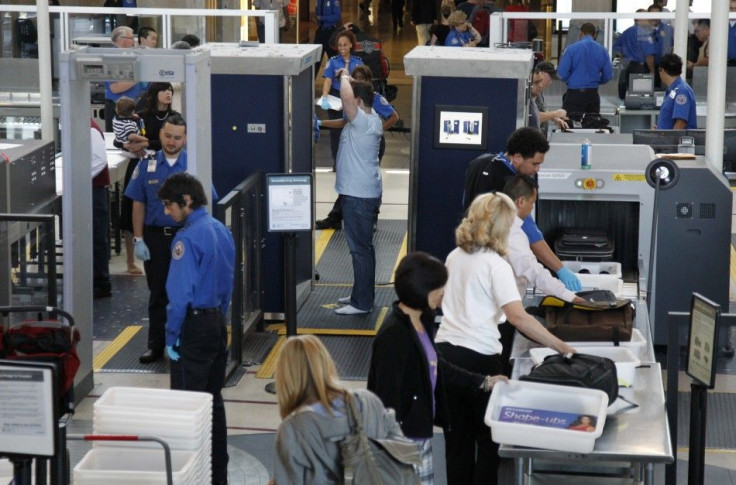TSA Removes Controversial Body Scanners From Major Airports

The much-maligned X-ray body scanners have quietly disappeared from several major U.S. airports over the last month, but the Transportation Security Administration says they’re simply shuffling the machines around.
ProPublica broke the story Friday with a revealing look at how the backscatters, as the X-ray scanners are known, have suddenly vanished over the span of a month.
TSA Director of External Communications David Castelveter confirmed to IBTimes Friday afternoon that the units have been removed from Boston Logan, Los Angeles, Chicago O’Hare, Charlotte Douglas, Orlando, LaGuardia and John F. Kennedy in New York.
Critics have long complained that the backscatters expose passengers to a small dose of ionizing radiation, which at higher levels has been linked to cancer. But the TSA, which has replaced the machines at these international hubs with millimeter-wave scanners, claims it’s not phasing them out altogether, nor does it believe they pose any health threat. The agency says it’s simply moving the machines around to speed up checkpoints at busier airports.
“In an effort to ensure the most efficient and effective use of security technology, TSA is strategically reallocating backscatter advance imaging technology units in order to allow for expanded use of advance imaging technology units at other airports," Castelveter said. He had no comment on which airports would receive the reallocated units, claiming the TSA is “still evaluating.”
The TSA has installed its millimeter-wave technology machines with a greater frequency over the past year, though various tests (none sponsored by the TSA) show its false alarm rate is between 23 and 54 percent, compared to the backscatter’s 5 percent. The millimeter-wave technology, which shows a cartoon-like image of the body and uses low-energy radio waves similar to those in cell phones, has no known health risks.
Last November, the European Commission banned security scanners that use X-ray technology “in order not to risk jeopardizing citizens’ health and safety.” Some of the last backscatter machines were removed from the UK's Manchester Airport just last month.
The U.S. Supreme Court, meanwhile, declined to hear a case earlier this month brought about by Florida-based blogger Jonathan Corbett, who maintains the website TSA Out of Our Pants!
Corbett contended the TSA’s use of advanced imaging technology and “invasive” patdowns violates passengers’ protection against illegal searches under the Fourth Amendment of the U.S. Constitution. He argued in court papers that the TSA has no unilateral authority to adopt such procedures.
The TSA rolled out the backscatter machines in October 2010 and subsequently authorized enhanced patdowns, which could include the touching of breasts, buttocks and genitals, for passengers unwilling to submit to those scanners.
Many like Corbett have expressed concerns that the scanners produce revealing images and may emit too much radiation.
TSA blogger Bob Burns, however, challenged Corbett’s claims in a post earlier this year, saying that the scanners are “completely safe.” Furthermore, he said “the vast majority use a generic image that completely addresses privacy concerns.”
“We’ve never claimed it’s the end-all, be-all. However, our nation's aviation system is much safer now with the deployment of 600 imaging technology units at 140 airports.”
Burns asserts that the imaging technology has found things as large as a gun and as tiny as a baggie of drugs artfully concealed on passengers’ bodies.
Corbett, meanwhile, says he has easily snuck metal through security, which he says shows that the body scanners can’t even detect basic weapons.
© Copyright IBTimes 2024. All rights reserved.












